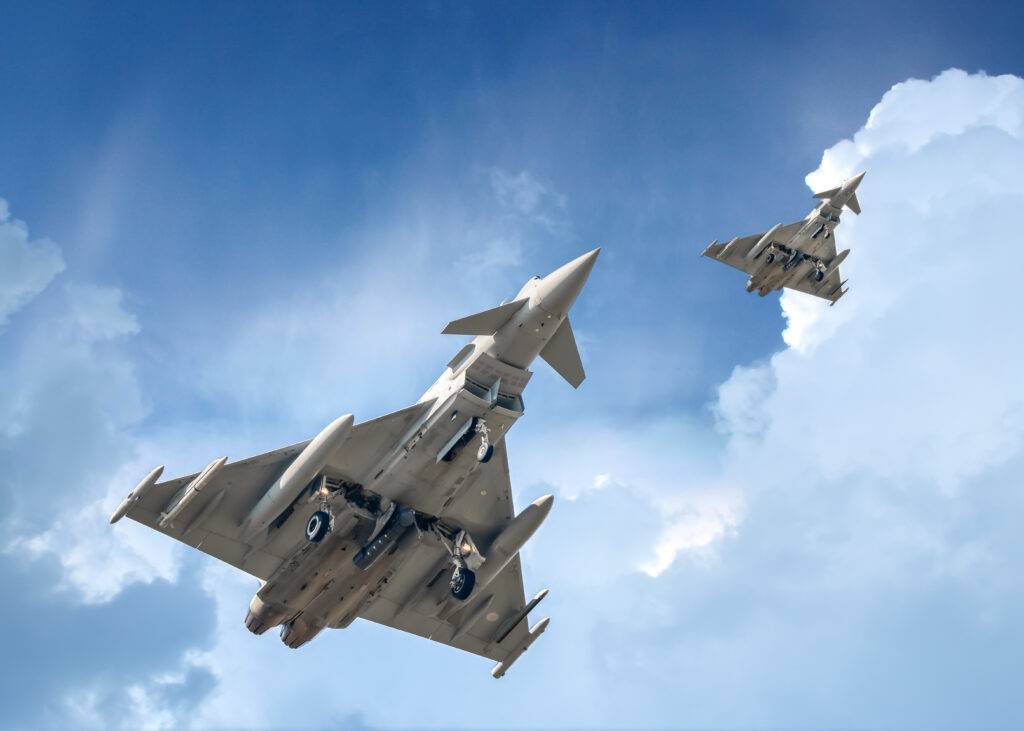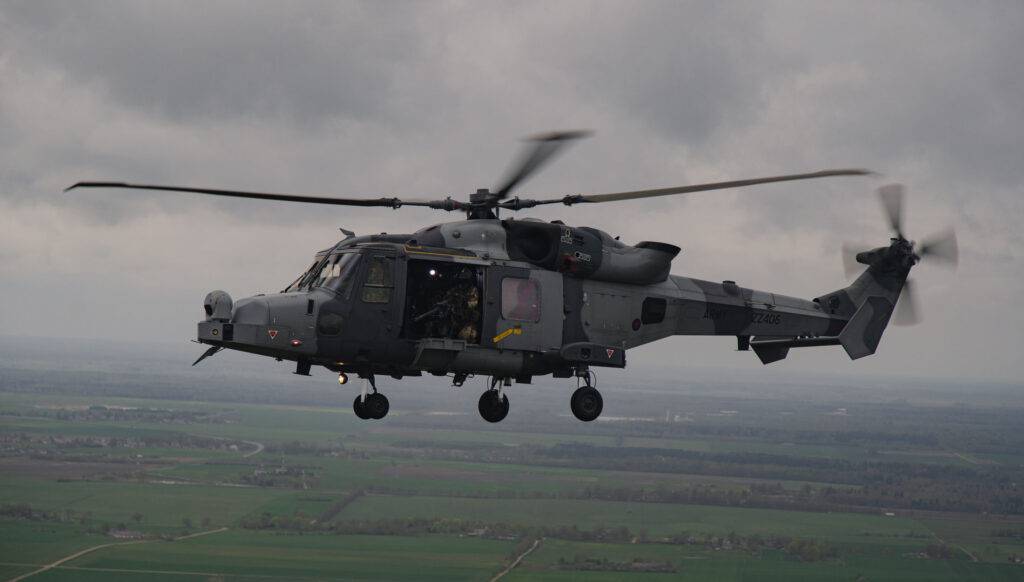The UK faces critical decisions on its defence strategy as it conducts its third Strategic Defence Review (SDR) in four years, due in 2025. The review must address modern threats, particularly from Russia and China, against a backdrop of fiscal constraints and shifting global dynamics.
Twenty years ago, Britain allocated 4 percent of its GDP to defense, despite facing seemingly less perilous times. Going back to the early 1960s, this figure was even higher at 7 percent. Today, European capitals are taking note as President-elect Donald Trump pushes for a 5 percent defense spending target for NATO allies. Poland has already achieved this goal.
The UK’s defense policy has undergone significant transformations over the past few decades, adapting to changing global security landscapes and domestic economic considerations. The 2010 Strategic Defence and Security Review (SDSR) marked a substantial shift, introducing austerity measures that led to reductions in personnel and equipment. Subsequent reviews in 2015 and 2021 sought to address emerging threats, such as cyber warfare and terrorism, while emphasizing modernization and technological innovation.

The ongoing debate in Whitehall centers on whether the Treasury will agree to increase defense spending from 2.3 percent of GDP to 2.5 percent during the current parliamentary term. Such a move would add tens of billions to government expenditure, a prospect that Chancellor Rachel Reeves is notably hesitant to endorse. The exact timeline for this increase remains uncertain, with economic pressures influencing budgetary decisions. When spending on the nuclear deterrent is excluded, the current 2.3 percent of domestic output drops to just 1.6 percent.
Strategic Choices of Categories of Defence Procurement
Each procurement approach involves trade-offs. Off-the-shelf systems are cost-effective but limit sovereignty. Collaborative programs reduce costs but require compromises. Licensed production supports domestic industry but may hinder full control. Domestic development ensures independence but is resource-intensive.
With the UK’s defence budget facing a £17 billion shortfall over the next decade, finding the right mix of these strategies is vital. The Ministry of Defence must balance cost, capability, and sovereignty while ensuring the long-term sustainability of its industrial base. By strategically combining these procurement methods, Britain can maintain its global defence capabilities while addressing fiscal and geopolitical challenges.

- 1. Off-the-Shelf Imports: Cost-Effective Solutions
Off-the-shelf procurement involves purchasing ready-made systems from foreign manufacturers, offering speed and cost efficiency. The P-8 Poseidon maritime patrol aircraft exemplifies this approach. Acquired from Boeing, the P-8 provides advanced anti-submarine warfare and surveillance capabilities. However, such reliance on imports can limit a nation’s ability to modify and adapt systems for unique needs. - 2. International Collaboration: Shared Costs and Innovation
International collaboration pools resources and expertise across nations to develop advanced systems. The Eurofighter Typhoon, a joint effort by the UK, Germany, Italy, and Spain, showcases this model. While collaboration reduces development costs and fosters interoperability, sovereignty concerns may arise. For instance, decision-making is often influenced by partner nations, potentially complicating upgrades and operations. - 3. Licensed Production: Balancing Sovereignty and Efficiency
Licensed production allows domestic industries to manufacture foreign designs, combining local economic benefits with reduced R&D costs. The AgustaWestland Apache AH Mk.1 is a case in point. While built in the UK under license, access to critical systems like source codes remained restricted, requiring external negotiation for modifications—a challenge for operational sovereignty. - 4. Domestic Development: Maximizing Sovereignty
Developing systems domestically provides maximum control over design, production, and future upgrades. Britain’s nuclear-powered submarines, such as the Vanguard and Astute classes, highlight the benefits of this approach. Domestic development demands substantial investment and time, making it viable only for critical strategic capabilities like nuclear deterrence.
Traditional Military Capabilities vs Merging Technologies
A central debate within the SDR revolves around the allocation of resources between traditional military capabilities and emerging technologies. Advocates for prioritizing air and maritime forces argue that these domains offer greater flexibility and align with the UK’s historical strengths. This perspective is supported by the need to counter naval threats from adversaries like Russia and China, whose activities in the Atlantic and Arctic have increased, including infrastructure developments with potential dual-use capabilities.
In a strategic move to enhance maritime security, traditional military capabilities, the UK and Germany have entered a defense pact that includes the deployment of German P-8 Poseidon maritime patrol aircraft from RAF Lossiemouth in Scotland. This collaboration aims to bolster NATO’s ability to detect and deter Russian submarine activities in the North Atlantic.
Additionally, the UK’s Joint Expeditionary Force has activated an advanced reaction system to monitor potential threats to undersea infrastructure and track the Russian shadow fleet. This initiative underscores the UK’s commitment to safeguarding critical maritime assets and maintaining regional stability.
Conversely, proponents of bolstering land forces emphasize the importance of a robust army capable of responding to continental threats, particularly in light of Russia’s actions in Ukraine. They argue for a modernized, technology-driven army that can effectively counter larger adversaries through superior intelligence and agility. This approach draws lessons from Ukraine’s defense strategies, highlighting the efficacy of well-coordinated, technologically equipped ground forces.
Future Capabilities: Global Combat Air Programme
The SDR is expected to place significant emphasis on technological advancements, including artificial intelligence (AI), autonomous systems, and cyber capabilities. The integration of AI and autonomous platforms is anticipated to enhance operational efficiency and reduce long-term costs, as autonomous systems do not require pensions or traditional support structures. However, debates persist regarding the timeline for the full integration of autonomous systems, with some experts suggesting that complete autonomy may not be reliable until 2040.
Additionally, the UK’s commitment to international collaborations, such as the Global Combat Air Programme (GCAP) with Italy and Japan, focusing on developing next-generation air capabilities. These partnerships aim to produce advanced fighter aircraft equipped to penetrate sophisticated air defenses, addressing potential threats from nations like China and Russia.
Investment Priorities: Nuclear Deterrent vs Cyberattacks
Economic considerations play a critical role in shaping the UK’s defense strategy. The rising costs of maintaining the nuclear deterrent, projected to consume up to 19 percent of the defense budget by next year, alongside commitments to major projects like AUKUS and GCAP, limit available resources for other defense areas. This fiscal reality necessitates difficult decisions regarding the scaling back or postponement of certain capabilities.
The debate over increasing defense spending is further complicated by domestic economic challenges and public opinion. While there is recognition of the need to enhance defense capabilities, particularly in light of modern threats such as cyberattacks and advanced missile systems, economic constraints and competing priorities pose significant challenges to substantial budget increases.

Vulnerabilities Against Ballistic Missile Attacks
The UK’s defense strategy is also influenced by its commitments to NATO and the expectations of international allies. American officials have emphasized the importance of the UK’s nuclear deterrent and maritime capabilities, highlighting the need for expeditionary forces capable of global operations. This perspective aligns with the UK’s historical role as a leading maritime power and its strategic interests in maintaining freedom of navigation and global trade routes. However, there is also pressure from NATO allies for the UK to enhance its contributions to collective defense, particularly in areas like air and missile defense.
The UK currently lacks an effective anti-ballistic missile defense (ABMD) system, leaving critical infrastructure and strategic locations, such as London, Faslane, and overseas bases like Akrotiri and Dhekelia, vulnerable to potential attacks. While the threat of a ballistic missile strike on the UK is minimal for now, recent conflicts have highlighted the importance of preparedness.
There are such systems available, that have proved their value. Israel has developed a such robust, multi-layered ABMD system. This includes long-range Arrow interceptors for threats inside and outside the atmosphere, the mid-range David’s Sling, and the short-range Iron Dome, designed to counter rockets from Gaza and Lebanon. Additionally, Israel is advancing a laser-based system for cost-effective interception and operates the U.S.-provided THAAD system for enhanced defense.

Short of Recruit Target
In the 2023-24 financial year, the British Army fell 3,700 recruits short of its target of 10,450, despite the UK’s population of 68 million. This recruitment challenge reflects a broader trend across developed nations, where armed forces face difficulties attracting skilled professionals, including naval engineers and cyber warfare specialists.
In comparison, Finland maintains the capability to quickly mobilize over a quarter of a million troops despite its population of only 5.6 million. Approximately 27,000 conscripts are trained annually in Finland, with about 80 percent of Finnish male citizens completing their service. Additionally, women can volunteer for military service, with recent years seeing an increase in female participation. For instance, in June 2023, 416 women were among the 8,600 conscripts mustered out into the reserve.
In Norway, around 9,000 conscripts are enlisted annually. The Norwegian government plans to increase this number to 13,500 by 2036. Approximately 6,000 young Swedes undergo military service each year. This number is set to increase to 12,000 by 2032. Denmark aims to increase the number of conscripts by 300, reaching a total of 5,000. This initiative includes extending conscription to women and increasing the duration of service from four to eleven months.
Reassessing Defense Priorities
The United Kingdom’s 2025 Strategic Defence Review represents a critical opportunity for the country to reassess and realign its defense priorities in response to evolving global threats and domestic economic realities. Balancing the demands of modern warfare, technological innovation, fiscal constraints, and international commitments will require strategic foresight and decisive action. The outcomes of this review will shape the future trajectory of the UK’s defense posture, ensuring that it remains capable of safeguarding national security and contributing effectively to global stability.
Read More:
- Gov.uk: Strategic Defence Review 2024-2025: Terms of reference
- Gov.uk: The UK’s Defence Contribution in the High North
- Gov.uk: Joint Expeditionary Force activates UK-led reaction system to track threats to undersea infrastructure and monitor Russian shadow fleet
- Gov.uk: The Russian Federation’s malign activities and interference: UK statement to the OSCE
- RAF: European nations invest in BAE Systems’ most advanced fighter pilot helmet
- Defence News: Sikorsky weighs scope of local assembly under UK medium-lift helo bid
- The Economist: Britain prepares for its third defence review in four years
- The Times: Britain Vulnerable to Ballistic Missiles-as-Holes-in-Defence-Revealed
- The Times: Threat of war won’t vanish just because British politicians ignore it
- The Times: German spy aircraft to fly from the UK in new defence deal
- War of the Rocks: The Cost of Sovereignty? The Future of Britain’s Defense Industrial Base
- UK Defence Journal: Britain ‘defenceless’ against ballistic missile attack
- The US Sun: Britain may need to hike defence spending to four per cent of its economic output, warns ex-Labour leader Neil Kinnock
- The Nordic Times: Norway to boost conscription to 13,500 by 2036
- Financial Times: UK military to scrap older warships and helicopters in £500mn savings drive
- Le Monde: Faced with Russian threat, Sweden trains more and more young conscripts



